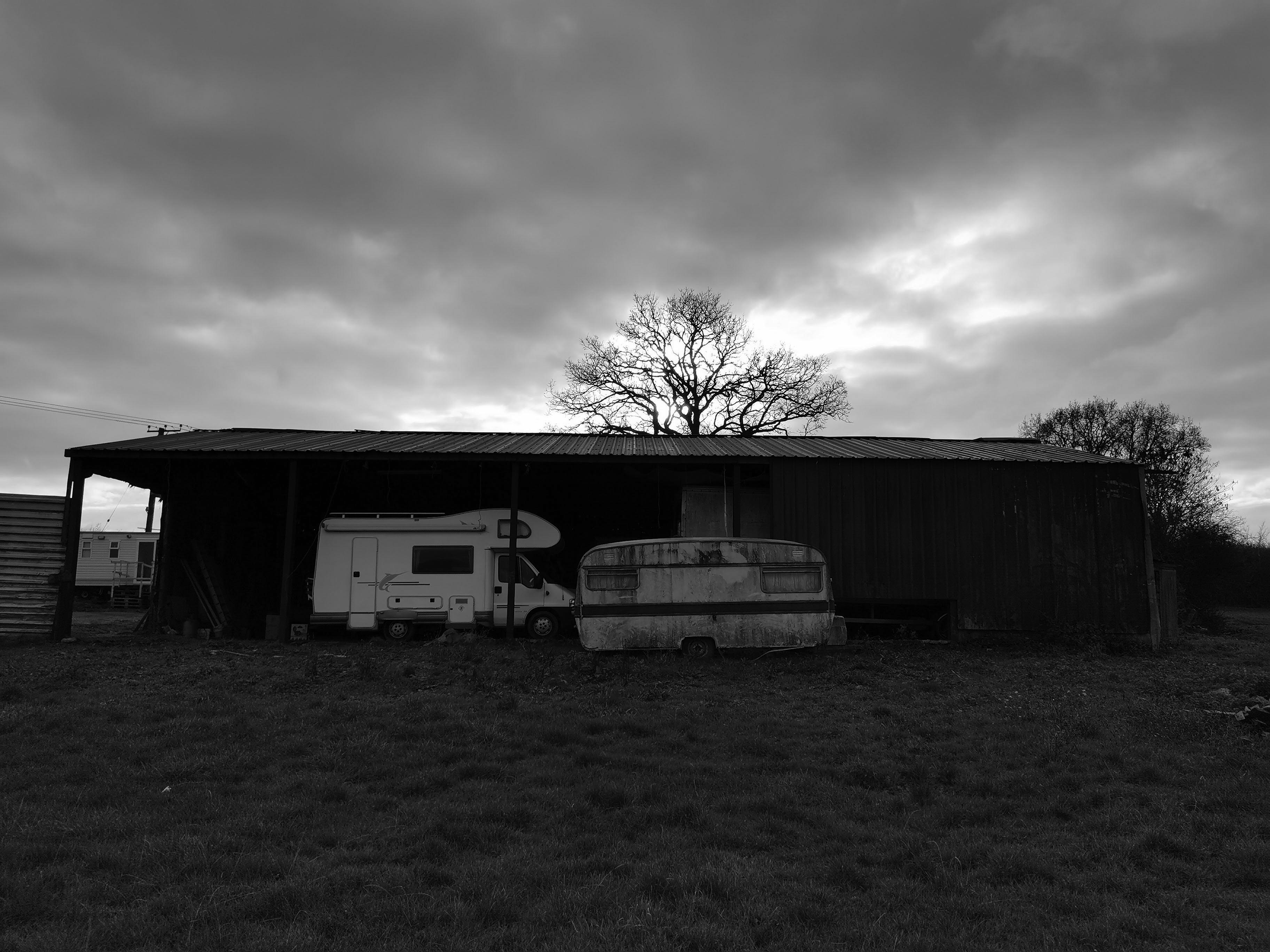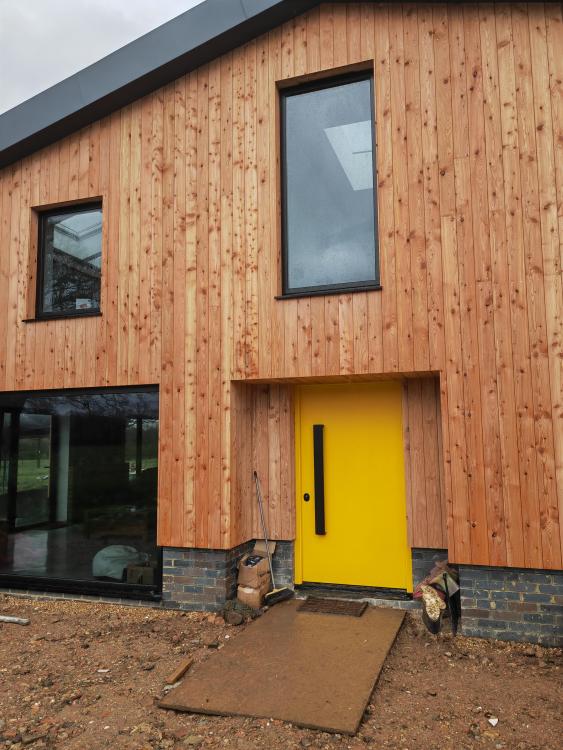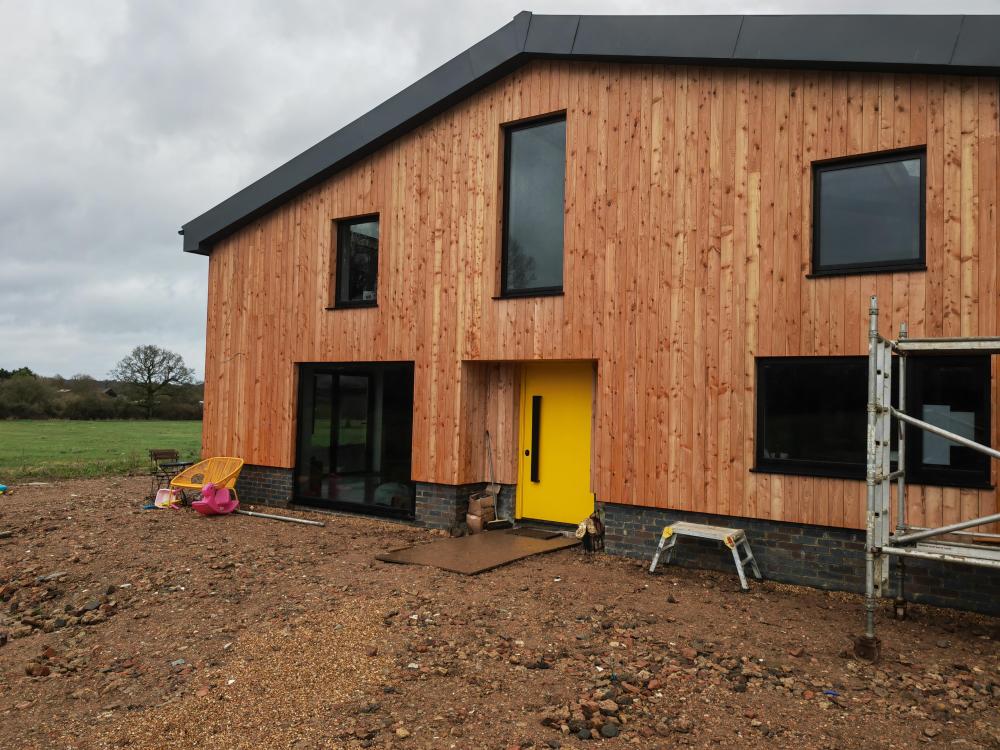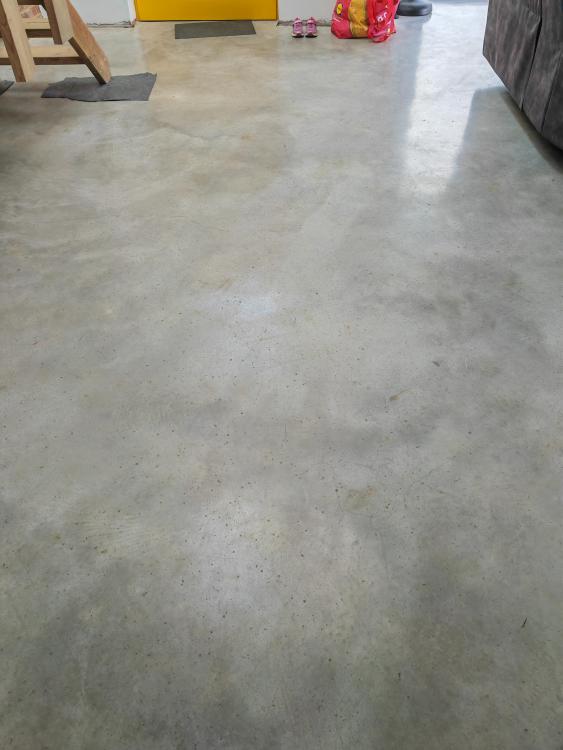-
Posts
30 -
Joined
-
Last visited
Personal Information
-
Location
South east England
Recent Profile Visitors
The recent visitors block is disabled and is not being shown to other users.
mattman's Achievements

Member (3/5)
17
Reputation
-

ASHP winter additional heating ideas?
mattman replied to ashthekid's topic in Air Source Heat Pumps (ASHP)
As above, I would look at finding out the cause of your large energy and heat requirement. I would also get on to a low electricity tariff asap if you're not already. The heat pump during the winter months needs to be on all the time to be most efficient and we have found a low priced tariff all during the day and night seems to work well - as an example we are on the Octopus Tracker tariff which hovers around 17 to 18p a kwh, all day any time of the day - during the winter months it was about 20 to 24p. Since March we haven't needed the heating on at all - just heating our water - which bearly costs anything - about 50p a day for around 3kwh a day or less. During the minus temp winter months for all space heating and hot water we used more energy, on average 25 to 30kwh per day. We are a smaller house than you, at 264sqm, a new masonry built self-build, reasonably air-tight with a 2.5 air tightness score, electric only, no gas, and a smaller 8.5kw ashp, ufh on the ground floor only, no heating upstairs apart from two towel rails, very open plan with a double height entrance area, so not a like for like comparison but I can share what we have done to achieve the lowest costs with our heat pump usage in our own situation (we did a lot of trial and error testing during the very cold winter months, not long after it was installed, and every time I made a change in a setting on the heat pump I found we had to wait 24 hours to see the result - after a few weeks of LOTS of trial and error with the heat pump I managed to significantly reduce our energy usage while at the same time maintaining an adequate constant room temperature): I have found best results with our heat pump is to have it on as low a flow temperature as possible, in the winter months when you require space heating: keep all ufh zones on (I recommend not turning some zones off, as this makes the zones which are on work harder - we trialled turning some zones off and it ended up costing us more and the whole place was colder too - we don't have any heating upstairs so I can't comment on whether or not to turn some of the zones off upstairs but it might be worth trialling possibly turning off some or all of the zones upstairs and see what difference in energy usage and room temp this makes - unfortunately it's the wrong time of year to test as the temperatures outside are quite mild), schedule your hot water heating to once or twice a day (we schedule ours to come on an hour before morning showers and an hour before evening bath/showers as we have small children), and make sure the max temperature in the cylinder is around 50° or ideally below with a max temp drop of round 4 to 6°, and most importantly make sure the immersion does not come on at any time apart from once a week for the Legionella cycle where it has to heat the cylinder to 60°. Hope this helps. -

Self-build steel frame barn conversion - almost complete
mattman replied to mattman's topic in Introduce Yourself
Hi Pete We are on a raft foundation. I'm not a builder nor architect but was heavily involved in the build getting my hands dirty when I could (sometimes even correcting things I wasn't happy with that the builders had done). We are a masonry build so it might be slightly different to your SIP structure I'm not sure..possibly not. Our raft foundation, from memory, was basically hardcore, crush, sand and then membrane and mesh etc then the structural concrete slab. The house was then built up around this and when water tight with internal walls done we then prepared for our concrete "finished" floor, designed to be at least 100mm thick but in some areas definitely 150mm. Thicker is better as it is less prone to cracking and actually also becomes a better thermal mass. Concrete, I believe (I might be wrong), is a better thermal mass than screed, but on the flip side takes longer to heat up than screed but then holds on to that heat for a lot longer. The build up of our "finished" concrete slab was all done by myself and my wife (as builders had left by this point) and we first made sure the structural concrete slab was all level (used some levelling compound where we needed it, and then laid our PIR insulation (celotex) directly on top of this. Then taped it all up (very important as concrete mustn't get through the gaps otherwise the insulation boards could float - this must always be done whether you are using concrete or screed on the top of insulation). Above the taped up insulation boards we then laid the thick gauge black damp proof membrane, taped up where any joints were in the membrane, and taped up against the walls. And above the membrane my plumber laid the underfloor heating pipes. And above the UFH my wife and I spent a couple of days laying "meshmen" (which are supports to hold up steel mesh) and laid steel mesh, all tied together. And then it was ready for the concrete pour which would act as our finished floor surface - and the same company who did the pour also did the powerfloating, on the same day, literally about two hours after the pour. In hindsight I would have preferred to have had the insulation and UFH all in the first layer of concrete slab, ie. the structural slab right at the beginning of the build, as it would have allowed a lot more ceiling height and saved the cost of the second concrete slab. Apparently a lot of passive houses work like this and have just one concrete slab which acts as both the structural slab and also the finished floor slab with all the insulation and UFH in it. In regards to the UFH not working in 150mm thick concrete.. it definitely does work but it works differently to what people might expect such as it might with thinner 75mm screed. It doesn't feel warm to the touch - but it equally doesn't feel like cold concrete either. Our pantry which has no UFH in it was very cold to the touch, in the winter, compared to the rest of our open plan area which did have UFH on. It definitely emits heat as when you look at the thermostats the temperature rises (it does take about 12 to 24 hours to change temperature as an ASHP works much slower) or when you walk in from the outside the heat really hits you. And it also retains heat very well even without any heating on. During the build before the UFH was operational the house was so warm. We love it. The concrete can still get warm to the touch if you raise the flow temperature up on the ASHP. But you really don't need to raise the flow temperature up at all as a steady low flow temperature is all the house needs to stay warm. We have ours at the lowest flow temperature setting of 25°. We haven't had the UFH heating on for the last three months as the house has stayed so warm on its own. The ASHP also runs much cheaper when you have a low flow temperature and have it on all the time too (seems counter productive but it works much better that way - and have all the UFH zones on too). The concrete slab works really well with the ASHP and UFH as it retains and emits the heat really gradually, instead of one big blast - allows it to run really efficiently. Especially so if your house is reasonably air tight too and has an MVHR. Hope this helps. Good luck in your build! Let us know how you get on. -

Larch or Brick? - a Cladding Dilemma
mattman replied to deancatherine09's topic in New House & Self Build Design
-

Larch or Brick? - a Cladding Dilemma
mattman replied to deancatherine09's topic in New House & Self Build Design
Definitely clad all of the left volume and recessed porch in wood if it were me. The other two options don't look quite right in my opinion. I think design wise having wood in all of the left structure/volume including the recessed covered area will look stunning. And I really like how the brick on the right hand side would be split by the roof line of the left volume. I think if you did go ahead with the wood, having it recessed looks really good. We have it in our own porch albeit on a tiny scale (attached pic of ours - you may have to zoom in to see the recessed porch and ignore the bright yellow door - we were originally going with black cladding but we really love the natural larch wood colour). We have UK larch so is a bit knotty compared to Siberian larch. Your house is a really nice design. -
Are you referring to "trickle" grid import, when there is plenty of battery energy stored up and/or plenty of PV/sun - yet there is a small delay before the inverter uses either the battery energy and/or PV and instead is using the grid for the first few seconds? I think this is called "ramp up" times when a load is first noticed by the inverter it takes a very small amount of time to start using either battery or PV power - and during this time the grid is used. There is a guy on youtube who talks briefly about this, EV Puzzle I think was his channel. It could be to do with load balancing with grid-tied inverters. It didn't appear to happen as much when he tested a Huawei inverter compared to another inverter (I can't remember the other brand) but the Huawei had much less of a ramp up time (less trickle grid import) compared to the other one. I believe Solax inverters also have a way of minimising ramp up times too. Another alternative is that all house loads run through the (EPS backup mode) batteries first and only when the batteries are nearly depleted or the load is too much for the inverter/batteries' maximum discharge rate only then does the grid temporarily cut in and meet that load demand - he called it a "grid parallel" set-up and Victron is good with this kind of set up although I see no reason why any hybrid inverter cannot also be set up in this way - as long as there is enough battery storage and the fuse on the EPS backup load is big enough. I am no expert on this but this is all from memory.
-
I'd go for the second option. You don't need three phase for that size. Your installer should do the DNO G99 application for you, or you can do yourself. I did ours and only took half an hour or so (although I did do a lot of reading on the subject before hand as well as getting a schematic design from the inverter manufacturer). We are single phase, and have a steel standing seam roof with 7.6kW PV array (19 panels) already installed but waiting for our G99 to come back for our inverter and battery storage. Personally I would get battery storage too if you can as you avoid paying VAT on them plus you have the option of storing excess energy instead of it going back to grid for very little whereas you can use stored energy in the evenings to run appliances in your home or if you have a powercut. The Solis 6kW is a good inverter as it is capable of running continuous loads in your home up to 5kW (when running off batteries such as in evening or in a power cut) or 6kW loads when connected to the grid. The smaller 3.68 kW solis inverter will only handle much smaller loads up to 3.6kW so not worth it in my opinion compared to the larger 6kW inverter. Hope it all goes well.
-
I too would stick with the MVHR and ASHP (air to water) which your architect specified. That way with the MVHR you get your controlled ventilation, required for when you're airtight, and with the air to water ASHP you get to heat all your hot water as well as space heating. We are a block build and have an MVHR and ASHP and it all works really well and is quite cheap to run.
-

Recommendations wanted for MVHR
mattman replied to IanP's topic in Mechanical Ventilation with Heat Recovery (MVHR)
We used a Beam C90 MVHR system supplied and all fully installed and commissioned for just over £5k, just before xmas. It covered a total floor area of 264sqm and used exposed galvanised steel ducting (as shown in the pic) because we wanted the industrial look plus it was all retrofit. They did an amazing job and worked till late each day getting the job done. It's really quiet and we get no condensation anymore and we also have no heating upstairs so any warmth generated downstairs is distributed throughout the house. Definitely recommend the system and company https://www.rbcentralsystems.co.uk/ who installed and commissioned it. -

Sealing up trickle vents?
mattman replied to MJNewton's topic in Mechanical Ventilation with Heat Recovery (MVHR)
I filled all mine with 70% closed cell expanding foam (the slow expanding Soudal foam). I wanted 100% closed cell as more airtight but 70% was the closest I could find. For good measure I also put a bead of airtight soudal sealant on top of the foam. I then plan to put the trickle vent covers back on. In hindsight we should have got windows with no trickle vents but we ordered the windows early on before focusing on air tightness etc. -

ASHP Running Costs / Efficiency
mattman replied to Sailchick's topic in Air Source Heat Pumps (ASHP)
Hi we have a small 8.5kW air source heat pump and find it works best at a very low flow temp, which is controlled on the heat pump controller, and on all day, in all zones. During very cold -6c outside weather we found we were using about 25 to 30kWh a day for all our domestic hot water and heating (this is just ASHP usage). We schedule our DHW to heat twice a day if it is below temp. We only have heating on the groundfloor via wet UFH, are well insulated with a reasonable air tightness score of 2.5, with MVHR which distributes warmth upstairs. With the milder weather we've been able to turn off our space heating which further reduces cost. We are on the Octopus Tracker tariff which we have found works really well as it is a low cost all through the day. which suits the heat pump as its on all the time. It's currently at 17p per kWh. It was 16p yesterday. -

Self-build steel frame barn conversion - almost complete
mattman replied to mattman's topic in Introduce Yourself
Thanks Mark. -

Self-build steel frame barn conversion - almost complete
mattman replied to mattman's topic in Introduce Yourself
Yeah we got some silly quotes for a fully polished floor. I think I read about or saw a program where someone powerfloated their concrete instead of polishing it and it seemed to be what we were after and less labour intensive so cheaper. We ended up going with a local concrete company who worked with a team who did the power floating, although my wife and I did all the labour to get the floor ready for the concrete pour.. Ie insulation, membrane and the steel mesh. It was half the price of polishing. It is quite an industrial look but the imperfections do give it texture and character. We love it. A lot of visitors comment how they like it too. It does get a few tiny hairline cracks but it actually blends in and adds to the character. For a few weeks after we had it laid it was very "smeary" and blotchy in appearance, like a white haze and I thought we had made a mistake getting it but the haze disappeared after several weeks. It's apparently part of the curing. -

Self-build steel frame barn conversion - almost complete
mattman replied to mattman's topic in Introduce Yourself
Looks amazing Ian! I really like the design. -

The older EPC does not make sense at all
mattman replied to mattman's topic in Energy Efficient & Sustainable Design Concepts
Ours had an air tightness score of 2.5. Next door didn't do any air tightness work on their house so opted not to test their house and instead use our test result, but had to take a lower result of 4.6 due to opting to not test their house. -

Self-build steel frame barn conversion - almost complete
mattman replied to mattman's topic in Introduce Yourself







